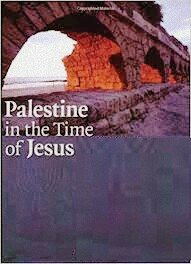PALESTINE IN THE TIME OF JESUS

Jesus came from the town of Nazareth in Galilee. This northern territory of Palestine was also his most important area of activity.
Apart from the larger towns of Sepphoris and Tiberias Galilee was a country area, and agriculture was the main occupation. The Lake of Gennesaret was famous for its fishing. Jesus is said to have found his first disciples among fishermen (Mark 1:16-29).
In the time of Jesus Galilee was surrounded by a number of Greek cities. There was also in Galilee a group of ten Greek towns - the Decapolis . The rest of the area was Jewish.
Samaria
South of Galilee lived the Samaritans, a mixed population resulting from political transfers of population, whom the Jews did not consider to be real Jews.
While the Jewish Temple was situated on the Temple Mount in Jerusalem, the Samaritans regarded Mt. Gerizim as sacred. They recognized as Holy Scripture only the five books of Moses, and the textual form they used was different from that in use among the Jews.
Judaea
The name Judaea had two different senses. Firstly, it meant the area surrounding Jerusalem , secondly it meant the whole area inhabited by Jews, which finally became a Roman province.
The mountainous region surrounding Jerusalem is dry and bare. To the east is the Dead Sea. In the oasis area north of the Dead Sea is Jericho, which is thought to be one of the oldest towns in the world.
Jerusalem
To the Jews Jerusalem was the centre of the world, where God dwelt in the
Temple . The Jews went there on pilgrimage at least once a year. It was also the economic, administrative and cultural centre. The Roman administration of Palestine was directed from Caesarea.
The Herodian Dynasty
At the time of the birth of Jesus Palestine was ruled by the Roman vassal king
Herod the Great, who was renowned for his great building projects and for his arbirtrary actions and ruthlessness, which towards the end of his rule became sheer paranoia.
After the death of Herod his dominion was divided into three parts among his sons, who continued as Roman vassals.
Archelaus was given control of Judaea and the region of Perea east of the Jordan. He was, however, a bad king. In 6 A.D. the complaints of his subjects led to his being exiled by the Emperor to Gaul. At the same time Judaea, Samaria and Idumaea were united to form the province of Judaea, whose administrator was - under the imperial legate of Syria - a representative of Rome, at first a prefect, later a procurator.
Galilee was ruled by Archelaus' brother
Antipas. His actions, too, caused bad blood among his subjects. For instance,
John the Baptist criticized Antipas, who eventually had him executed (see Mark 6:14-29). As a result of political intrigue Antipas too was exiled to Gaul in 39 A.D.
The only one of Herod the Great's sons to be a successful ruler was Philip, who ruled from Galilee the regions of Trachonitis, Gaulanitis, Batanaea and Auranitis to the south-east.
Pilate
During the period 26-36 the Roman representative in Judaea was Pontius Pilate, who failed to understand the religious feelings of the Jews. This led to repeated conflicts and protests, and in suppressing them Pilate showed cruelty and a tendency to use strong measures. Pilate's career was finally interrupted as a result of complaints made to the Emperor by his subjects.
The Jewish War
After the rule of Pilate the situation in Palestine became more and more tense and finally came to a head in the revolt of 66 A.D.
At first the rebels achieved success. The battle against the technical and material supremacy of Rome was, however, hopeless from the very beginning.
Jerusalem was conquered in the year 70 and its Temple was destroyed. The last pocket of resistance was the mountain fortress of Masada. It was conquered in 73 A.D.